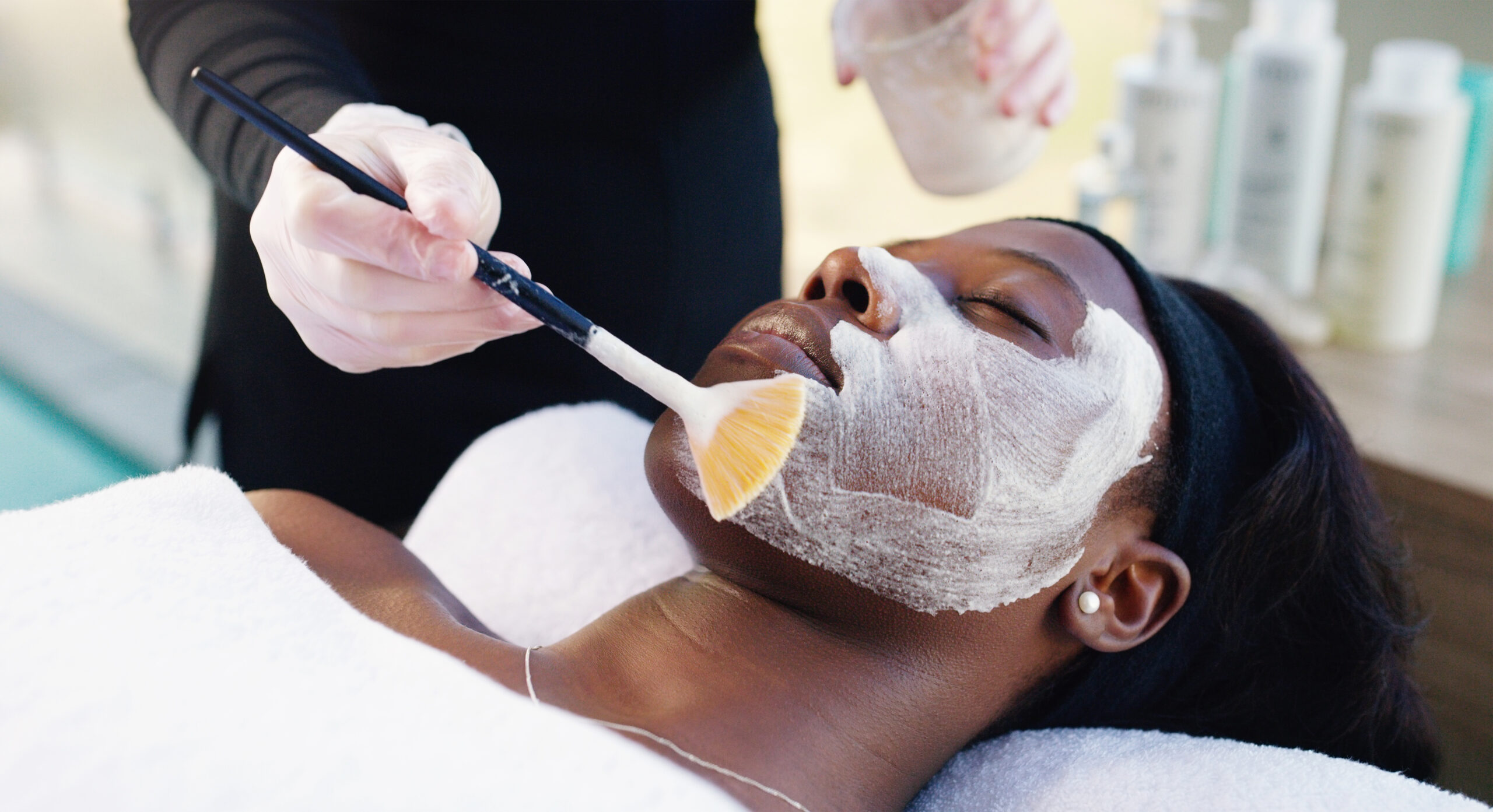Hyperpigmentation is a skin concern that affects many Black women. It often comes with the experience of dark spots, acne scars or melasma. These skin issues have a range of causes, including hormonal changes, sun exposure and post-inflammatory responses from acne. Chemical peels for treating hyperpigmentation has gained popularity lately.
With a wealth of skincare options available, one may wonder if chemical peels are a good option for hyperpigmentation. To explore this further, 21Ninety spoke with Dr. Hamdan Abdullah Hamed, a board-certified dermatologist and trichologist, to break down everything you need to know about chemical peels.
Understanding Chemical Peels: How Do They Work?
Chemical peels are skin treatments that use special liquid solutions to exfoliate and remove the outermost layers of the skin.
“This helps make the skin feel smoother and can lessen dark spots, giving a brighter and more even look to your skin,” Hamed said.
By removing dead skin cells and promoting new skin cell growth, chemical peels help to reduce the appearance of dark spots, fine lines and uneven skin tone. However, Hamed believes that not all chemical peels are created equal. In addition, he said that people with darker skin tones are more susceptible to adverse effects.
Choosing the Right Peel for Darker Skin Tones
One of the most important considerations for Black women is selecting the correct type of peel. Hamed advises that superficial and medium-depth peels tend to be the safest options for darker skin.
“Superficial peels are the lightest kinds of peels, often made using alpha hydroxy acids, like glycolic acid, or beta hydroxy acids, such as salicylic acid,” Hamed said. “They work well for treating small skin color changes and have a smaller risk of making dark spots after you use them.”
These types of peels are gentle enough to minimize the risk of skin damage, while still being effective. For more stubborn dark spots or cases of melasma, medium-depth peels may offer more dramatic results. These peels often contain trichloroacetic acid, which penetrates deeper into the skin. However, Hamed advised caution for this.
“Medium-depth peels may work better for difficult dark spots, but they must be used carefully to prevent any problems,” he said.
On the other hand, chemical peels containing phenol or very strong acids should be avoided. They can increase the risk of worsening hyperpigmentation.
Effectiveness for Treating Hyperpigmentation
When it comes to treating hyperpigmentation caused by acne or melasma, chemical peels can be a useful tool.
“Superficial peels can help improve skin texture and tone,” Hamed said. “Medium-depth peels may work better for more serious cases of hyperpigmentation.”
Hamed stresses that it often takes multiple sessions, typically three to six treatments, to achieve noticeable improvements. Patience and consistency are key when it comes to achieving long-lasting results. Before undergoing a chemical peel, preparation and aftercare are crucial to reduce the risk of complications.
“Consult with a skin doctor who knows your skin kind and worries,” Hamed said. “They may suggest patch tests to see how your skin responds to peeling.”
This consultation will help identify the right type of peel for your specific skin concerns and ensure that your skin reacts positively to the treatment. Hamed recommends preparing the skin by using products, like hydroquinone or retinoids. It’s equally important to avoid using strong skincare products, such as retinoids or powerful acids, a few days before the treatment. It reduces the risk of irritation.
Post-Treatment Care: Protecting Your Skin
After undergoing a chemical peel, one of the most essential steps is protecting your skin from the sun.
“After you get a chemical peel, your skin becomes more sensitive to sunlight,” Hamed said.
Sun exposure can exacerbate hyperpigmentation or cause new dark spots to form. It’s critical to wear a broad-spectrum sunscreen with at least SPF 30. Reapplying sunscreen every two hours is a must, especially if you plan to be outdoors. While chemical peels can be an effective solution for hyperpigmentation, they do come with some risks particularly for Black women. One of the most common side effects is PIH, where the skin darkens after the treatment.
“It happens when skin turns darker after some treatment, and this mostly occurs to people with darker skin colors,” Hamed said.
To minimize the risk of complications, choosing a skilled dermatologist with experience treating darker skin tones is essential.
Can Chemical Peels Offer a Long-Term Solution?
While chemical peels can provide significant improvement in hyperpigmentation, Hamed said that they should not be viewed as a one-time solution.
“Chemical peels can assist in handling hyperpigmentation, but it is better not to use them as the only solution,” he said.
A consistent skincare routine, including sun protection, gentle exfoliation, and hydration, will help maintain your skin’s health and glow in between peel sessions.
